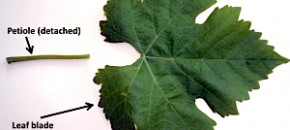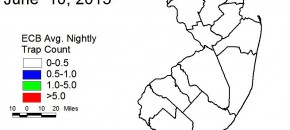Basil downy mildew has been reported in New Jersey. All growers should be scouting on a regular basis and applying protectant fungicides. Late blight was reported on potato in northern North Carolina near the Virginia border on this past week. There have been no reports of late blight in the region to date. To track late blight in […]
Continue reading...Audit Ready: 10 Tips to Help You Prepare

1. Auditors will most likely look at aerial maps of the farm prior to their visit. They may ask about water sources, buildings etc. that they see on the online map that you might not have included in your production area maps. Take a look at your farm on google maps to make sure you […]
Continue reading...Vineyard Nutrition Monitoring

from NJ Center for Wine Research & Education Bloom is here and it is a great time to get an accurate assessment of the nutritional status of your grapevines. Monitoring Grapevine Nutritional Status What to sample? Soil or leaf petioles. Soil sampling should be performed before planting and every 3 years, primarily to track the […]
Continue reading...Potato | Tomato Disease Forecast 6-12-15
Click to View | Download Report 6-12-15 Potato Disease Forecasting Report We will be tracking DSVs for Late blight development and calculating P-days for initiating the first early blight fungicide application. The first late blight fungicide application is recommended once 18 DSVs accumulate from green row. Green row typically occurs around the first week in May […]
Continue reading...Fruit IPM Report 6-9-2015
Peach Clean Up Your Ground Cover – Plant Bugs and Native Stink Bugs: As we move into summer heat, catfacing insects become a primary target, especially in dry seasons. Many orchards have ground covers composed of flowering weeds and clover, which makes an ideal habitat for catfacing insects. These insects breed and multiply in the […]
Continue reading...Veg IPM Update: Week Ending 6/10/15

Sweet Corn Catches of European corn borer (ECB) are now in decline through much of the state. Remaining areas of highest activity include parts of Morris and Warren counties (see ECB map). ECB infestations are now rising in sweet corn plantings. Feeding ranges from single digits to 12% in areas where IPM personnel are operating.
Continue reading...